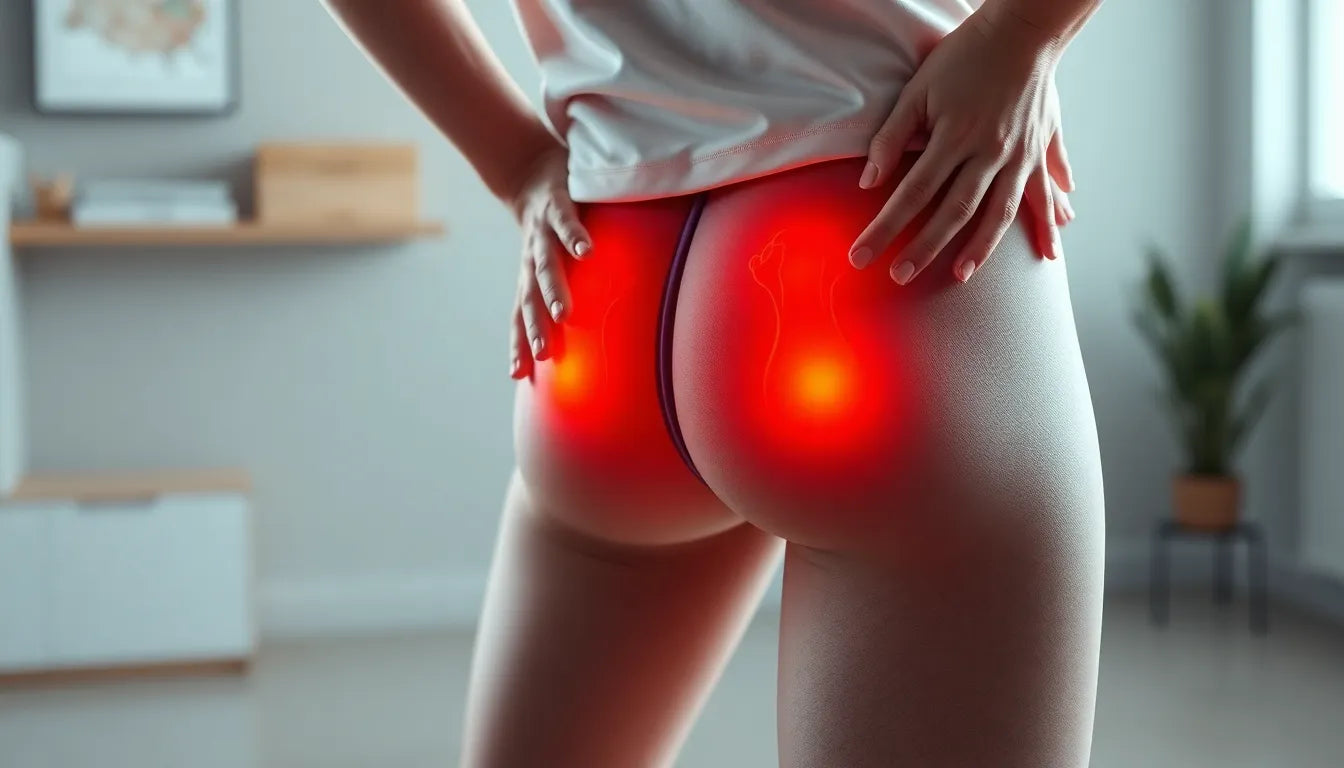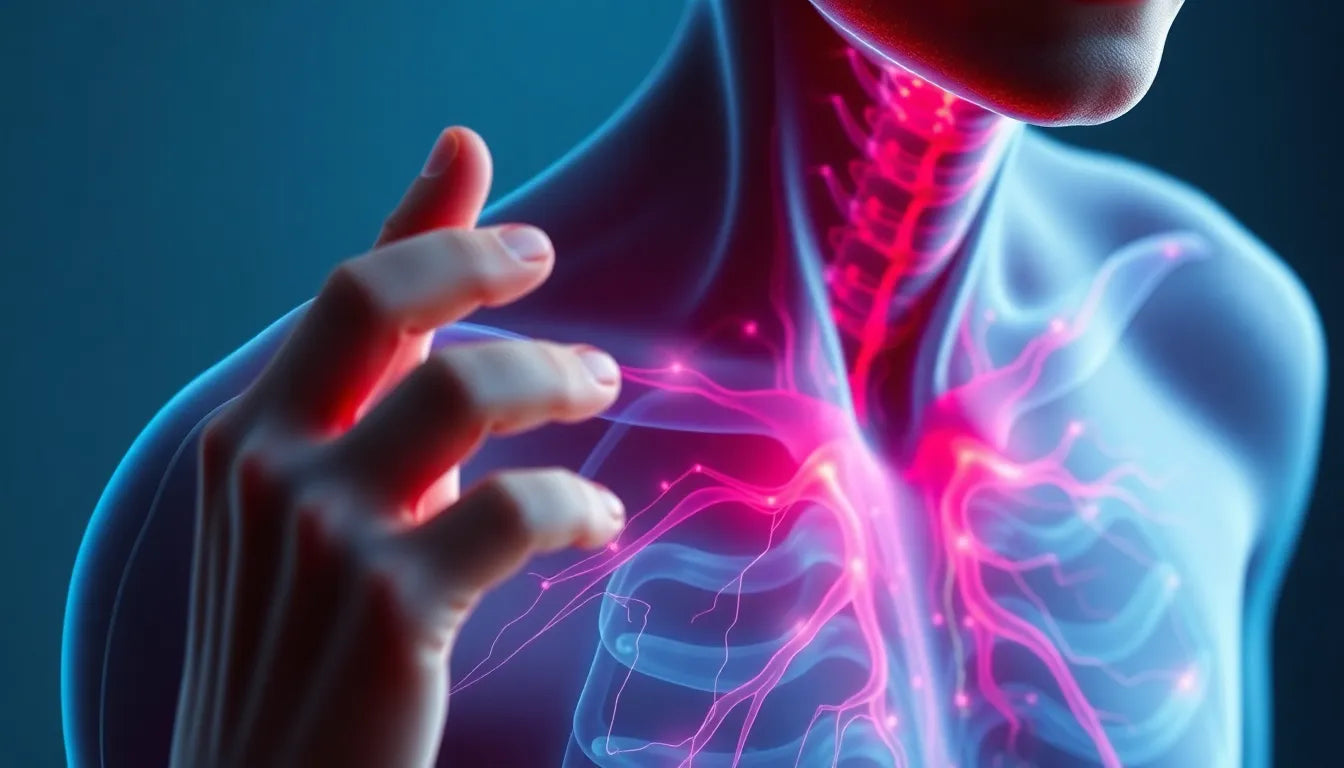Lower back pain after lifting is a common issue that affects a significant number of people across various age groups and professions. Whether you're lifting heavy boxes during a move or simply picking up your child, the strain on your lower back can lead to discomfort and even serious injuries. Understanding the underlying causes of this pain is crucial for finding effective solutions and preventing future occurrences.
Understanding the causes of lower back pain
One of the primary reasons people experience pain in the lower back after lifting is due to poor lifting techniques. Many individuals unknowingly put their back at risk by bending at the waist instead of the knees, or by twisting their torso while lifting. These improper methods can lead to muscle strains, sprains, and even more severe conditions such as herniated discs.
In addition to technique, weak core muscles play a significant role in lower back pain. The core muscles, which include the abdominal and lower back muscles, provide essential support to the spine. When these muscles are weak, the back is more susceptible to injury from lifting. Moreover, previous injuries or overexertion can exacerbate the risk of developing pain in the lower back.
Structural issues within the back, such as herniated discs, can also cause significant discomfort. This condition occurs when the soft center of a spinal disc pushes through a crack in the tougher exterior casing, often resulting in pain that radiates down the legs. Such conditions require careful management and, in some cases, medical intervention.
Why understanding and addressing this pain is important
Have you ever felt a sharp pain in your lower back after lifting something heavy? If so, you're not alone. This type of pain can be debilitating, affecting your ability to perform daily tasks and reducing your overall quality of life. Recognizing the causes and learning how to prevent and alleviate this pain is essential for maintaining a healthy and active lifestyle.
The goal of this article is to provide you with simple techniques to alleviate and prevent lower back pain after lifting. By understanding the root causes and implementing effective strategies, you can protect your back from injury and enjoy a pain-free life. In the following sections, we will delve deeper into the specific causes, symptoms, and practical solutions to help you manage and prevent lower back pain effectively.
Causes and symptoms of lower back pain after lifting
Understanding the causes and symptoms of lower back pain after lifting is essential for effective management and prevention. A significant cause of this pain is poor lifting techniques. Many people unintentionally strain their backs by twisting or bending incorrectly while lifting heavy objects. This improper posture can lead to muscle strains or sprains, which are common and often painful.
Another contributing factor is weak core muscles. The core, comprising the abdominal and lower back muscles, plays a vital role in stabilizing the spine. When these muscles lack strength, the spine is more vulnerable to injury during lifting activities. Previous injuries can also increase susceptibility to pain, as they may have weakened the back's structural integrity.
In some cases, more severe conditions like herniated discs can be the underlying cause of lower back pain. A herniated disc occurs when the soft inner material of a spinal disc pushes through a tear in its outer layer, potentially causing pain that radiates down the legs. This condition requires careful attention and, in severe cases, medical intervention.
Recognizing the symptoms
Recognizing the symptoms of lower back pain after lifting is crucial for early intervention and treatment. Common symptoms include sudden, sharp pain in the lower back, localized tenderness, and reduced mobility. Pain may worsen with movement, coughing, or sneezing. In some cases, individuals may experience radiating pain down the legs, indicating a possible herniated disc.
More serious symptoms that require immediate medical attention include numbness, muscle weakness, or loss of bladder or bowel control. These symptoms may suggest nerve involvement and necessitate prompt evaluation by a healthcare professional.
Treatment and prevention strategies
Addressing lower back pain after lifting involves a combination of treatment and prevention strategies. Conservative methods such as pain relief medication, physiotherapy, and chiropractic care are often effective in managing symptoms. These approaches aim to reduce pain and improve mobility, allowing individuals to return to their daily activities.
Strengthening exercises for the core and back muscles are also crucial for preventing future injuries. By enhancing muscle support around the spine, individuals can reduce the risk of strains and sprains during lifting activities. Incorporating exercises like planks, bridges, and leg raises into a regular fitness routine can significantly improve core strength.
Correct lifting techniques
Implementing proper lifting techniques is key to preventing lower back pain. When lifting, it's important to keep the load close to the body, bend at the knees rather than the waist, and avoid twisting motions. This approach helps distribute the weight evenly and reduces strain on the back. Visual aids, such as step-by-step guides or infographics, can be helpful in demonstrating these techniques effectively.
Ergonomic aids and product recommendations
Ergonomic aids can play a significant role in both treatment and prevention. Lumbar support belts and ergonomic chairs are valuable tools for those who frequently lift heavy objects. These products help maintain proper posture and reduce strain on the back, promoting a healthier working environment.

Lumbar support belt
Supports and stabilizes the lower back, ideal for relieving or preventing back pain.
In summary, understanding the causes and symptoms of lower back pain after lifting is crucial for effective management and prevention. By adopting proper lifting techniques, strengthening core muscles, and utilizing ergonomic aids, individuals can significantly reduce their risk of experiencing this common issue. In the next section, we will explore ongoing prevention strategies and answer frequently asked questions to further support your journey towards a pain-free life.
Ongoing prevention strategies for lower back pain
Preventing lower back pain after lifting involves incorporating specific exercises and lifestyle adjustments into your daily routine. Strengthening the core and back muscles is crucial for providing the necessary support to the spine during lifting activities. Exercises such as planks, bridges, and leg raises can be highly effective in building core strength and enhancing overall stability.
In addition to exercise, maintaining a healthy weight is essential, as excess body weight can increase the strain on the lower back. Combining a balanced diet with regular physical activity can help manage weight and reduce the likelihood of back pain.
Ergonomics also plays a vital role in prevention. Setting up a back-friendly workspace with ergonomic furniture can significantly reduce the risk of developing lower back pain. Ensure that your chair supports the natural curve of your spine, and your desk is at a comfortable height to avoid unnecessary strain.
Quick intervention for persistent pain
If you experience persistent or severe lower back pain, it is important to seek medical advice promptly. Early intervention can prevent the development of chronic issues and ensure that any serious underlying conditions are addressed. A healthcare professional can provide a tailored treatment plan, which may include physiotherapy, medication, or other interventions.
Frequently Asked Questions
What are the most common causes of lower back pain after lifting?
Poor lifting techniques, such as bending at the waist or twisting the torso, are common causes of lower back pain. Weak core muscles and previous injuries can also contribute to the problem. In some cases, more serious conditions like herniated discs may be involved.
How can I tell if my back pain is serious?
Serious back pain may be indicated by symptoms such as numbness, muscle weakness, or loss of bladder or bowel control. If you experience these symptoms, it is important to seek medical attention immediately, as they may suggest nerve involvement or other serious conditions.
What exercises can help prevent lower back pain?
Core-strengthening exercises like planks, bridges, and leg raises can help prevent lower back pain by providing better support to the spine. Regular physical activity, in general, can improve muscle strength and flexibility, reducing the risk of injury.
Are there any products that can help alleviate back pain?
Yes, ergonomic aids such as lumbar support belts and ergonomic chairs can help alleviate back pain by promoting proper posture and reducing strain on the back. These products are especially beneficial for those who frequently lift heavy objects.

Men's Posture Shirt™ - Black
Patented shirt activating muscle support to improve posture and relieve tension.
When should I see a doctor for back pain?
You should consider seeing a doctor if your back pain persists despite home treatment, or if you experience symptoms such as numbness, weakness, or loss of bladder or bowel control. A healthcare professional can provide a comprehensive evaluation and recommend appropriate treatment options.
By understanding the causes of lower back pain after lifting and implementing these preventative strategies, you can significantly reduce your risk of experiencing this common issue. Remember, early intervention and proper techniques are key to maintaining a healthy, pain-free back.


















